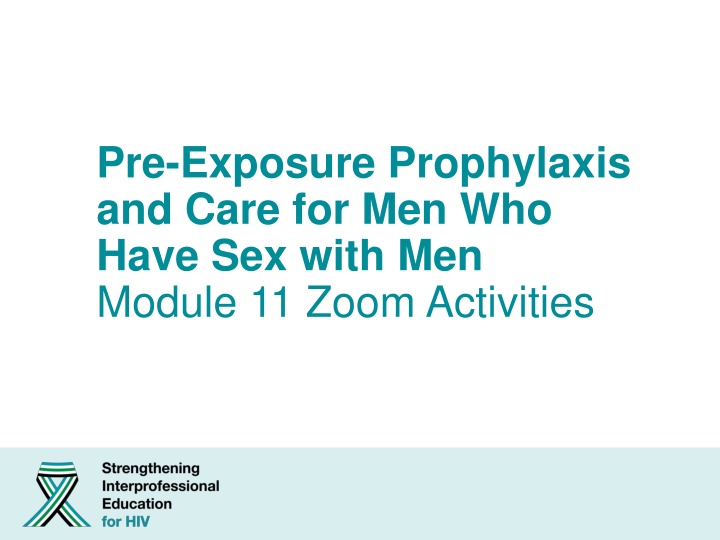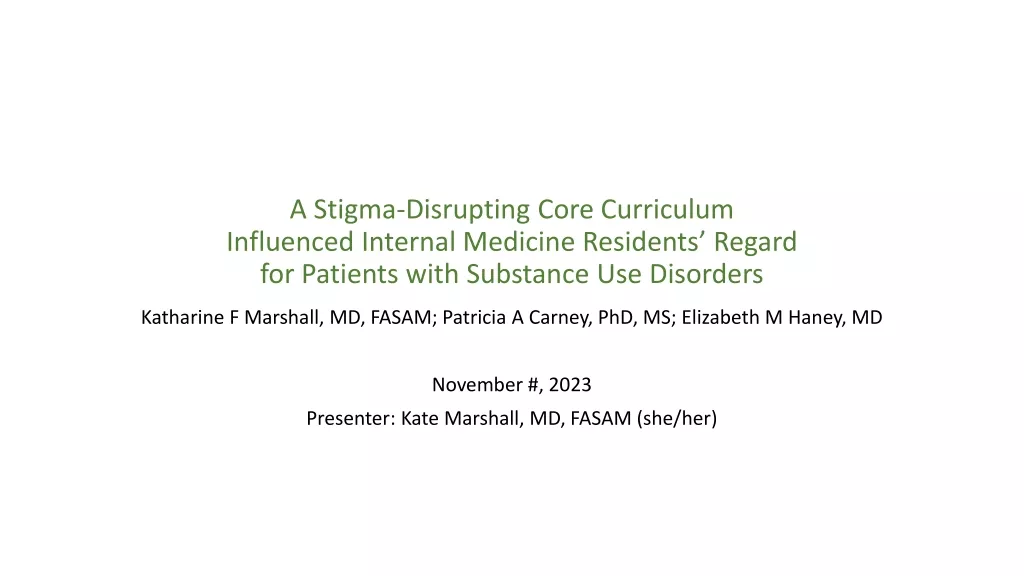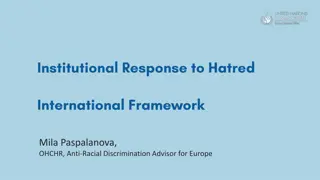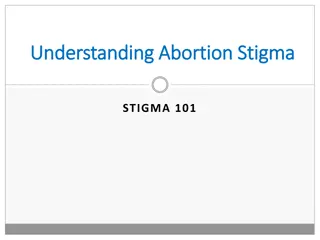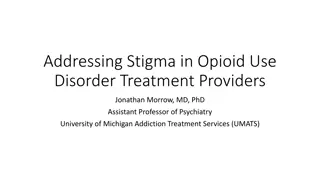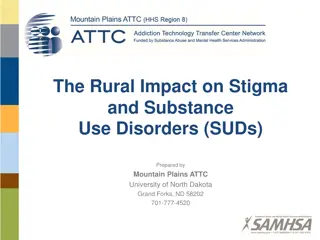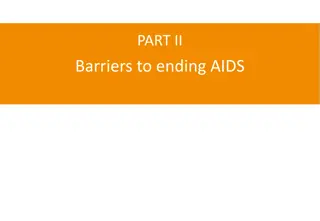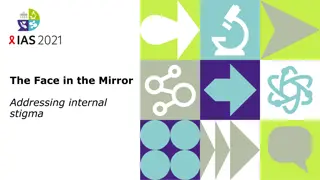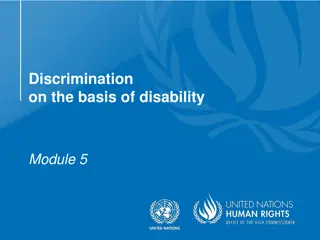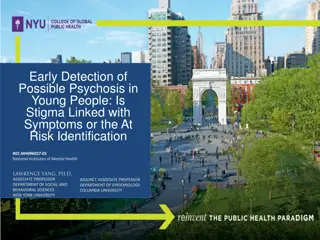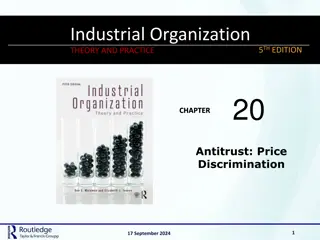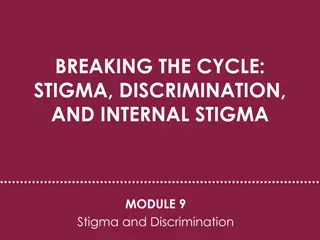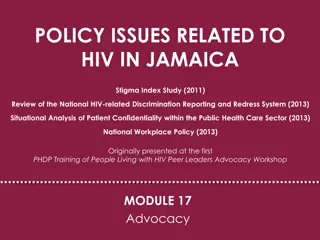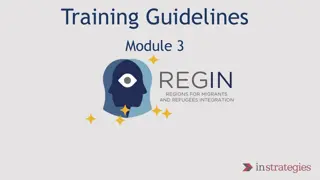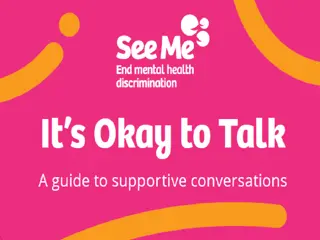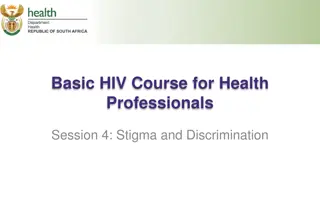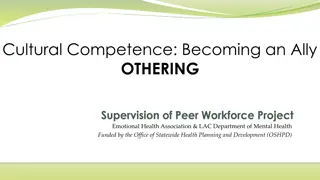Challenging Stigma and Discrimination in Healthcare
Stigma and discrimination in healthcare settings can impact clinical outcomes for key populations. Learn how health professionals can address biases and challenge discrimination through multidisciplinary discussions and role-playing activities. Explore solutions to combat stigma and improve care for men who have sex with men.
Download Presentation

Please find below an Image/Link to download the presentation.
The content on the website is provided AS IS for your information and personal use only. It may not be sold, licensed, or shared on other websites without obtaining consent from the author.If you encounter any issues during the download, it is possible that the publisher has removed the file from their server.
You are allowed to download the files provided on this website for personal or commercial use, subject to the condition that they are used lawfully. All files are the property of their respective owners.
The content on the website is provided AS IS for your information and personal use only. It may not be sold, licensed, or shared on other websites without obtaining consent from the author.
E N D
Presentation Transcript
Pre-Exposure Prophylaxis and Care for Men Who Have Sex with Men Module 11 Zoom Activities
#1: Multidisciplinary discussion Objective: Recognize the underlying prejudice toward key populations, including provider bias.
Stigma and discrimination S&D is experienced by key populations Health professionals have biases, even if we are unaware of them Our biases can adversely affect clinical outcomes
How can we as health professionals challenge S&D? How might you address each point along the flowchart within your professional role? Source: USAID, Pact Inc, and ICRW. Understanding and challenging stigma toward men who have sex with men: toolkit for action. 2010.
Breakout rooms 10 minutes
Reflection What solutions do you suggest to address stigma and discrimination?
#2: Taking a Sexual History role play Objective: Demonstrate how to take a sexual history using the 5 P s framework
Case Lubanzi is a 25-year-old man who presented to the outpatient department (OPD) with painful defecation and anal discharge, which was concerning for an STI.
Role Play instructions In pairs, take turns practicing taking a sexual history (3 minutes each) Read the provider and patient scenarios from: Learner Zoom Handout (PDF in the LMS)
Breakout rooms 10 minutes
Return to breakout rooms to debrief with your partner: How did this activity make you feel? What went well? What would you like to improve the next time you take a sexual history?
Breakout rooms 5 minutes
#3: Review Indications for PrEP Objective: Apply WHO guidelines to evaluate for PrEP eligibility
Indications for PrEP HIV negative AND Have a sexual partner with HIV who is not virally suppressed OR Are sexually active in a high HIV prevalence population or geographical location AND who has had any of the following risk factors in the past 6 months: 1. Vaginal or anal sexual intercourse without a condom with more than one partner OR A recent history of a STI by laboratory testing or self-report or syndromic STI treatment OR Has used PEP for sexual exposure OR Is requesting PrEP 2. People who inject drugs 3. Sex workers SOURCE: WHO Implementation Tool for Pre-Exposure Prophylaxis (PrEP) of HIV Infection: Clinical (2017)
Breakout Room instructions Imagine you are working in a primary care clinic that is administering a PrEP questionnaire to all patients. Review two sample patients to determine if those patients are candidates for PrEP Materials needed: Learner Zoom Handout WHO PrEP technical brief Figure 1 from the WHO Implementation Tool for PrEP
Breakout rooms 10 minutes
Who is eligible for PreP? Patient A: A 55-year-old man who has had condomless sex with three female sex workers in the last 6 months (but none in the last month). He has had Gonorrhea twice in the last year and syphilis once. He has hypertension and chronic kidney disease with a creatinine clearance of 25. Patient B: A 20-year-old woman with one partner over the last year. This partner is HIV-positive and she does not know if he is on treatment. She has never had an STI. She is estimated to be 12 weeks pregnant and has not had sex in 6 weeks. She would like to be on PrEP if you think it is indicated. Patient C: A 42-year-old woman with one male partner for the last year. She had syphilis in her twenties and no other STIs since. Her partner tested negative for HIV at a community health fair last year. She does not think he has other sexual partners. Patient D: A 27-year-old woman with 5 male partners in the last 3 months. She has not used condoms with any of them. She last had sex around 1-2 weeks ago and recently developed fevers, a sore throat, and swelling in the lymph nodes of her neck. She has no medical problems and was treated for Chlamydia last year. ? ? ? ?
Who is eligible for PreP? Patient A: A 55-year-old man who has had condomless sex with three female sex workers in the last 6 months (but none in the last month). He has had Gonorrhea twice in the last year and syphilis once. He has hypertension and chronic kidney disease with a creatinine clearance of 25. Patient B: A 20-year-old woman with one partner over the last year. This partner is HIV-positive and she does not know if he is on treatment. She has never had an STI. She is estimated to be 12 weeks pregnant and has not had sex in 6 weeks. She would like to be on PrEP if you think it is indicated. Patient C: A 42-year-old woman with one male partner for the last year. She had syphilis in her twenties and no other STIs since. Her partner tested negative for HIV at a community health fair last year. She does not think he has other sexual partners. Patient D: A 27-year-old woman with 5 male partners in the last 3 months. She has not used condoms with any of them. She last had sex around 1-2 weeks ago and recently developed fevers, a sore throat, and swelling in the lymph nodes of her neck. She has no medical problems and was treated for Chlamydia last year. No, due to creatinine level and chronic kidney disease Yes Unlikely now, but could be in the future Yes, but acute HIV should be excluded before starting PrEP
